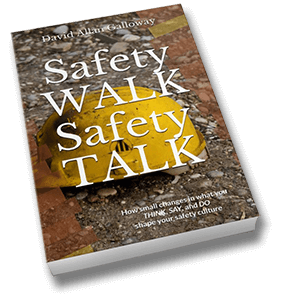By David Allan Galloway, Founder and President, Continuous MILE Consulting, LLC
Distractions are everywhere in our world. We can be distracted while driving, while working, or while doing any number of routine tasks. In the workplace, incident investigations reveal that tens of thousands of injuries each year occur when people are not focused on the task at hand.
Most everyone recognizes the dangers associated with being distracted while driving a motor vehicle. Distracted driving is a leading contributor to automobile crashes. For example, here are just a few statistics from several organizations dedicated to stopping texting and driving injuries and deaths:
- Every year, about 421,000 people are injured in crashes that have involved a driver who was distracted in some way.
- Each year, over 330,000 accidents caused by texting while driving lead to severe injuries. This means that over 78% of all distracted drivers are distracted because they have been texting while driving.
- 1 out of 4 car accidents in the US are caused by texting while driving.
- Texting and driving is 6 times more likely to get you in an accident than drunk driving.
- It takes an average of three seconds after a driver’s mind is taken off the road for any road accident to occur.
- Reading a text message while driving distracts a driver for a minimum of five seconds each time.
- The chances of a crash are increased by 23 times when you are texting.
Error Rate and Distraction
A recent Michigan State University study provides supporting evidence that being distracted significantly increases human error (which can result in an accident).
Participants in this study were asked to perform a series of tasks in order, such as identifying with a keystroke whether a letter was closer to the beginning or end of the alphabet. Of course, a certain number of errors were made even without interruptions.
Occasionally the participants were told to input two unrelated letters — which took about 3 seconds — before returning to their task. These slight interruptions led to participants making twice as many mistakes when they returned to their sequencing task.
In addition, there are a number of studies and/or exercises which prove that humans cannot consciously complete more than one task at a time. Indeed, one author has labeled the so-called skill of multi-tasking as “worse than a lie.” No matter how you look at it, being distracted (for any reason) significantly increases the risk of making a mistake and/or being injured.
Unfortunately, we are not only distracted by something in our environment, but simply by the way our minds operate!
Subconscious Distraction
A fascinating study conducted by Matthew Killingsworth and Daniel Gilbert provides insight into how frequently our mind wanders. (The authors point out that humans spend a lot of time thinking about what is not going on around us. Further, we often contemplate events that happened in the past, might happen in the future, or will never happen at all). As part of their work, Killingsworth and Gilbert devised a clever way to measure how often we think about something other than what is happening right here and now.
The researchers needed to find an efficient way to measure real-world emotions. They required a process that would allow them to contact people as they engage in their everyday activities and ask them to report their thoughts, feelings, and actions at that moment.
The problem was solved by developing a web application, which was used to create a large database of real-time reports of thoughts, feelings, and actions of a broad range of people as they went about their daily activities. The application contacted participants through the phones at random moments during their waking hours, presented them with questions, and recorded their answers to a database. The database currently contains nearly a quarter of a million samples from about 5000 people from 83 different countries who range in age from 18 to 88 and who collectively represent every one of 86 major occupational categories.
To find out how often people’s minds wander, what topics they wander to, and how those wanderings affect their happiness, they analyzed samples from 2250 adults who were randomly assigned to answer a happiness question (“How are you feeling right now?”), an activity question (“What are you doing right now?”), and a mind-wandering question (“Are you thinking about something other than what you’re currently doing?”).
[Note: the study revealed some interesting results from the answers to the first two questions about happiness and activity – which are not discussed here. To read the complete study, click here.]
In terms of the third question, here was the key finding: people’s minds wandered frequently, regardless of what they were doing. How frequently? Mind wandering occurred 47% of the time. Surprisingly, the nature of people’s activities had only a modest impact on whether their minds wandered.
In other words, nearly half the time we are not truly focused on what we are doing at the moment!
Mind on Task
In the workplace, consider the classic admonition about “keeping your mind on the task.” A supervisor who strives to reduce risk will collaborate with employees to remove all obvious distractions – so they can focus on the task at hand.
However, armed with the mind-wandering information cited above, the challenge to keep our minds on our task goes beyond removing common distractions. Even if we eliminate the most egregious distractions (cell phones, pagers, interruptions, environmental factors, priority changes, scheduling demands, etc.), there is a good chance that people still may not think about what they are doing when they do it.
In other words, what we can’t see when observing others is an insidious source of risk. After all, do we really know what others are thinking about when they are doing a job? Of course not. Therefore, we should assume that 50% of the time, anyone who is performing an activity is not totally focused on what he is doing.
Now that’s a scary thought!

Safety WALK, Safety TALK by David Galloway
Mitigating Risk
What can we do to reduce the risk associated with the tendency for our mind to wander? Here are some suggested approaches that go beyond eliminating the obvious distractions:
1. Address tasks with the highest risk.
The jobs or tasks with the greatest risk for injury should be prioritized for action. It is far more important to intervene when the task has a high risk profile and therefore demands a person’s full attention to safely complete this task. Consider using software like TRUCE to block mobile distractions when employees are completing tasks with a high risk profile.
2. Have a conversation.
We are not mind-readers. The only way to know what someone is thinking about in the moment is to have a conversation. Ask them to share why they are doing what they are doing. We may discover false perceptions or risk-taking habits that we can proactively address. Of course, this approach is only effective if the conversation is facilitated in a way that builds trust, learning, and improvement.
3. Take time-outs.
Explicitly give your employees permission to take a brief “time-out” at frequent intervals when they are working on a high-risk task. Some may argue that time-outs will contribute to mistakes by interrupting the flow of work. However, brief time-outs are different from most external interruptions or distractions. These are planned personal pauses designed to keep our minds “in the moment.” Time-outs are used to regain focus on the task.
4. Develop safe habits.
One of the most effective defenses for a wandering mind is to practice performing a task the same (safe) way every time until it becomes a habit. When someone loses focus, a safe habit is how that person will subconsciously perform the task. Habits allow the individual to safely complete a task, even if they have a wandering mind or if they are distracted.
5. Leverage social influence.
Enlist respected employees in the organization to set the standard for remaining focused while performing high-risk work. (We refer to these respected employees as opinion leaders). When opinion leaders (1) frequently use time outs and (2) constantly work on developing safe habits, many others will follow their lead.
6. Empower others to speak up.
Employees always need to watch out for one another. There are a series of actions that leaders can take which will encourage others to say something if they see risky behavior – or if they perceive that a co-worker is not completely focused on performing a critical task.
Conclusion
Distractions cause us to lose focus when performing a task. These often lead to human error, which is a major contributor to accidents and injuries. However, our minds also frequently wander. One study concludes that about 1/2 the time we are engaged in an activity, we are not thinking about what we are doing at that moment.
There are steps we can take to reduce the risk associated with a wandering mind. These include having proactive conversations, taking frequent time-outs, developing safe habits, and using social influence to encourage everyone to speak up.
A creative and thoughtful mind is beautiful. A wandering mind that is not focused on a high risk task is dangerous!
References
https://www.nhtsa.gov/risky-driving/distracted-driving
http://psycnet.apa.org/psycinfo/2013-00033-001/
Photo credit: iStock photo ID: 497487570 by iLexx

